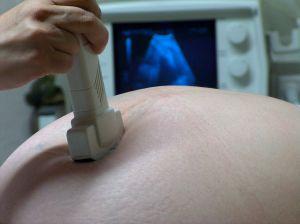Ultrasound is popping up everywhere. It was once used only sparingly to determine whether a pregnancy was on track. However, ultrasound devices are now used in nearly all doctor’s and physical therapist’s offices. Surprisingly, most people are still unaware of how ultrasound works. This leaves many questioning the safety of this technology.
History
Ultrasound technology was introduced in the 1950s as a way to detect foreign masses like tumors and gallstones. According to the Smithsonian Institute Archives, computers were not attached to the ultrasound machine until 1982, making it a workable medium for all physicians. By 1996, ultrasound technology was refined enough to offer more than double the information in half the time of the earlier 1982 model. Ultrasound grew immensely in popularity during this time. Continued advancements contribute to the growing number of ultrasounds annually.
Technology
Ultrasound works similarly to bats’ sonar. The ultrasound emits sound at a frequency higher than the human ear can detect. A transducer pumps these sound waves into the area being treated. Sound waves bounce back to the transducer. This tells the computer the distance the transducer is from any mass. That information is instantly translated by a computer into images and displayed on a monitor. 3D ultrasound displays masses as white and fluid as black. 4D ultrasound compounds several 3D images to create one clear image or movie capable of showing a baby’s facial movements.
Purpose
Ultrasound is used as a safe alternative to potentially hazardous imaging devices such as x-ray and MRI scans. Pregnancy imaging is the most common application of ultrasound. Utilizing this technology, physicians and ultrasound technicians can determine gestational age, potential problems with the pregnancy and fetal gender. However, ultrasound’s applications are far reaching. NASA reports using ultrasound to help astronauts watch for over 335 potential ailments that astronauts are susceptible to while in space. Here on Earth ultrasound is used to diagnose and track a variety of disorders from tumors to blood clots. Physical therapists also use this technology for therapeutic purposes. Strained muscles, overextended ligaments and exhausted joints can all benefit from the use of ultrasound.
Process
Ultrasound is a painless and non-invasive procedure. Occasionally an ultrasound technician requests that your bladder is full before imaging. The technician starts by placing clear conductivity gel on the skin. She then places the transducer on the skin which produces images instantly. She takes a few snapshots on her computer to view and measure for information. The technician often uses a transvaginal probe to get a clearer image on women who are newly pregnant.
Safety
For use of pregnancy imaging, the FDA warns that ultrasound may not be as safe as once thought. The benefits of ultrasound during pregnancy can certainly outweigh the risks; however, keepsake imaging is considered an irresponsible medical practice. This includes 4D ultrasound and ultrasound to identify gender. While no studies show that ultrasound is currently harmful to a fetus, the fear remains that companies–in an attempt to improve the quality of keepsake images–will eventually cause harm. The American Institute of Ultrasound in Medicine and European Committee for Medical Ultrasound present similar concerns for the future of this technology.





